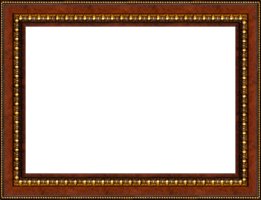How to Frame Your Oil Portrait
The thought of gingerly sliding a new oil painting out of its sturdy plastic shipping carton, placing it on a clean hard surface, and carefully unrolling it to reveal my image, replicated and beautified in a way that only oil paints do, is so compelling! The typical time needed to paint the portrait is 1-2 weeks. After that, the paint must dry to the point of withstanding the shipping process without damage, that takes about 1 week. The paint will not be fully dry, however, for approximately 6-12 months. (See my other blogs for advice on whether varnishing is best for your portrait.)
So what d o you do in the meantime? It is advisable to stretch and frame the painting immediately. Please take care, because even a slight bump to the oil paint surface has the potential to cause future cracking of the paint surface. A local frame shop is usually a good bet, and the more choices of frame styles they can show you (in a friendly and helpful way of course), the better. There is a consistent theme running through these blog posts: have an idea of the larger theme/style/personality/color scheme you are looking to create, during each step in the process of commissioning an oil portrait. This is true about choosing a frame, as well. The colors and design style of both the oil painting and the room it will be hung in should blend with the frame, not clash. A properly chosen frame will not distract viewers from the portrait, and it will compliment other furnishings in the room.
o you do in the meantime? It is advisable to stretch and frame the painting immediately. Please take care, because even a slight bump to the oil paint surface has the potential to cause future cracking of the paint surface. A local frame shop is usually a good bet, and the more choices of frame styles they can show you (in a friendly and helpful way of course), the better. There is a consistent theme running through these blog posts: have an idea of the larger theme/style/personality/color scheme you are looking to create, during each step in the process of commissioning an oil portrait. This is true about choosing a frame, as well. The colors and design style of both the oil painting and the room it will be hung in should blend with the frame, not clash. A properly chosen frame will not distract viewers from the portrait, and it will compliment other furnishings in the room.
There are essentially 2 kinds of frames available: the external frame (traditionally crafted from wood and often ornate; wood stretchers would be installed too as part of the process of framing), and the “gallery style” internal frame (also typically made of wood, but the portrait is hung without need for an exterior frame). The external frame provides a very classic look that is well-suited for respectful, family heirloom kinds of paintings. The internal frame is a more contemporary look, such as what you see in museum exhibits of painters who are still alive. This would be better suited for a portrait that will be placed in a room with a modern decorative style.
Note: if you choose the internal frame method, it is a good idea to communicate this to us as part of your order. It may change how the artist paints the periphery of the portrait. Also, if in your instructions you request that the background of the portrait is, for example, detailed and realistic, or in contrast, lacking specific details or fading out of focus at the edges, then keep this in mind when choosing how your frame will look next to such visual effects.
Finally, properly stretching and framing the canvas is very important, so be sure to include the cost of this in your portrait budget. The fee may depend on both the size of the portrait and the type of stretching bars used. It is possible to do the stretching and framing work yourself, but I would not advise it unless you’ve received proper hands-on training from a reputable source.
Author: Julie Anne
